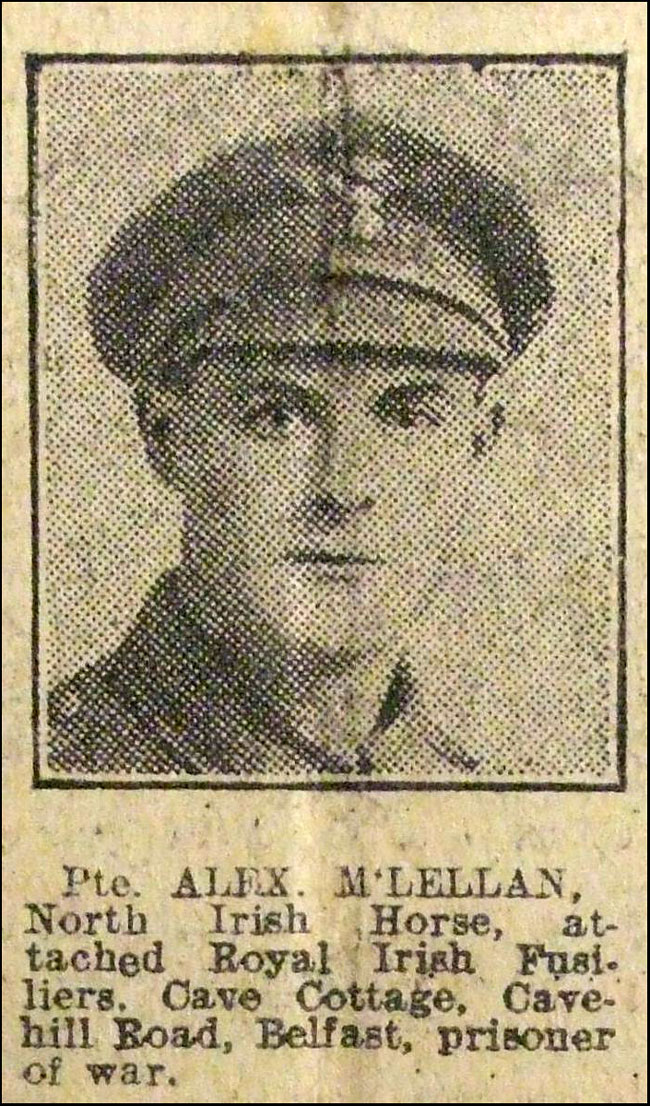Private Alexander McLellan

Alexander (Sandy) McLellan was born on 21 January 1894 at 1 Cherrington Terrace, Belfast, the last of six children of Scottish-born cutler Thomas McLellan and his wife Jane (nee Mathews). His mother died when he was just six years old, and his father the following year. By the time of the 1911 Census he was living with three of his siblings at Cliftonville Avenue, Belfast, and working as an apprentice draper. He later lived at Cave Cottage, Cavehill Road.
McLellan enlisted in the North Irish Horse between 10 June and 16 July 1915 (No.1695). He embarked for France in the first few months of 1916, perhaps with E Squadron on 11 January 1916.
In May and June 1916 the five North Irish Horse Squadrons then in France, together with the 6th (Inniskilling) Dragoons Service Squadron, came together to form the 1st and 2nd North Irish Horse Regiments.
In September 1917 the 2nd North Irish Horse Regiment was dismounted and most of its men, together with some surplus to the needs of the 1st NIH Regiment, were transferred to the 9th (Service) Battalion, Royal Irish Fusiliers – renamed the 9th (North Irish Horse) Battalion. Like most, McLennan was transferred on 20 September following a period of infantry training at the 36th (Ulster) Division's Infantry Base Depot at Harfleur. He was issued a new regimental number – 41549 – and posted to A Company. He probably saw action with the battalion during the Battle of Cambrai in November and December 1917.
From 21 to 28 March 1918 the 9th (NIH) Battalion took part in a fighting withdrawal from St Quentin to near Amiens, during the first phase of the German spring offensive. McLellan was one of the many men of the battalion initially posted as missing, but later found to have been captured during the fighting, on 24 March near St Quentin.
He remained a prisoner of war, at Rastatt and then Mannheim, until the end of the war, when he was repatriated.
McLennan married Sarah (Sadie) Paisley on 25 December 1935. By 1947 he was living at 41 Ballarat Street, Belfast, and working as an 'artizan'. He died on 12 December that year in the Royal Victoria Hospital.
Image from the Belfast Evening Telegraph, kindly provided by Nigel Henderson, Researcher at History Hub Ulster (www.greatwarbelfastclippings.com).
